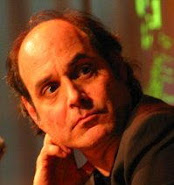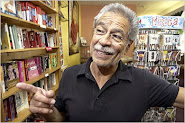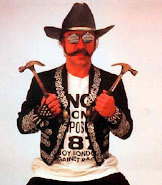
Chicana Genius: Amalia Mesa-Baines
(Artist and Cultural Critic)
Lesson plan created by Irma Vargas Rosas, M.A., M.Ed., doctoral student
Program in Culture, Literacy, and Language
Division of Bilingual Bicultural Studies
University of Texas, San Antonio
Lesson Plan Title – Critical Evaluation, Writing & Art
Learning Level
Grades 6-12
Pre-Instruction or Prerequisite Knowledge/Skills
Basic critical analysis, writing, and art skills
Lesson Duration
4-5 sessions, 1-2 hours each
Student may choose to do research outside of class.
Learning Location
Computer lab and/or classroom, art room
Materials
Computers with printer/paper, chart paper, art supplies
Learning Level
Grades 6-12
Pre-Instruction or Prerequisite Knowledge/Skills
Basic critical analysis, writing, and art skills
Lesson Duration
4-5 sessions, 1-2 hours each
Student may choose to do research outside of class.
Learning Location
Computer lab and/or classroom, art room
Materials
Computers with printer/paper, chart paper, art supplies
PowerPoint available: [Coming soon]
Learning Objectives (Teacher may wish to modify them as she/he deems necessary: http://www.tea.state.tx.us/teks/)
Grades 6-8
English Language Arts/Reading
TEKS 2A: The student is expected to interpret speakers' messages (both verbal and nonverbal), purposes, and perspectives.
15C, F: The student is expected to write to inform such as to explain, describe, report, and narrate; compare text events with his/her own and other readers’ experiences.
Fine Arts (Art)
TEKS 3A, B: The student is expected to identify in artworks the influence of historical and political events; compare specific artworks from a variety of cultures
4A, B: The student is expected to conduct in-progress analyses and critiques of personal artworks; and analyze original artworks, portfolios, and exhibitions of peers to form conclusions about formal properties and historical and cultural contexts.
Grades 9-12
English Language Arts/Reading
TEKS 20A, B: The student is expected to investigate the source of a media presentation or production such as who made it and why it was made; deconstruct media to get the main idea of the message's content.
9B: The student is expected to compare text events with his/her own and other readers' experiences.
1A: The student is expected to write to report and describe.
Fine Arts (Art)
TEKS 3A, B: The student is expected to compare and contrast historical and
contemporary styles, identifying general themes and trends; describe general
characteristics in artworks from a variety of cultures
4A: The student is expected to interpret, evaluate, and justify artistic decisions in personal artworks
Procedure
1.) A day prior to the beginning of lesson, teacher will ask students to bring a piece of art that decorates a wall in their homes to class the next day. Students will understand that they must ask their parent(s) for permission, if they bring in one of their pieces. Teacher may provide a few extra pieces in case some students don’t bring any.
2.) The day that begins the lesson, teacher will present the rubric for analyzing a piece of art
1.) A day prior to the beginning of lesson, teacher will ask students to bring a piece of art that decorates a wall in their homes to class the next day. Students will understand that they must ask their parent(s) for permission, if they bring in one of their pieces. Teacher may provide a few extra pieces in case some students don’t bring any.
2.) The day that begins the lesson, teacher will present the rubric for analyzing a piece of art
Teacher may wish to make extra copies.
3.) Students will write an expository essay. http://www.geocities.com/fifth_grade_tpes/expository.html
4.) Teacher will explain how reading a book and using contextual clues to understand can also be applied to “reading” art.
5.) Students will understand that art can also be read and elements can be tied to convey the full meaning of the work. http://www.csupomona.edu/~plin/ews410/read_paintings.html
6.) Students will work in groups of 4-5 to read the pieces of art they brought from home. Students will write their ideas down to help them write their essay.
7.) Teacher will create a concept web on chart paper with the word ‘genius’ in the center.
8.) Teacher will ask: Who is a genius?
9.) Teacher will write students’ suggestions on the chart paper
10.) Teacher will use Internet site to discuss the MacArthur Foundation and Fellows (geniuses). www.macfound.org/programs/fel/fel_overview.htm
11.) Teacher will inform students that Amalia Mesa-Baines is a MacArthur genius.
12.) Students will research the life and successes of Amalia Mesa-Baines (Google Scholar, Google, etc.) by focusing on the 5Ws and How. http://en.wikipedia.org/wiki/Five_Ws
5.) Students will understand that art can also be read and elements can be tied to convey the full meaning of the work. http://www.csupomona.edu/~plin/ews410/read_paintings.html
6.) Students will work in groups of 4-5 to read the pieces of art they brought from home. Students will write their ideas down to help them write their essay.
7.) Teacher will create a concept web on chart paper with the word ‘genius’ in the center.
8.) Teacher will ask: Who is a genius?
9.) Teacher will write students’ suggestions on the chart paper
10.) Teacher will use Internet site to discuss the MacArthur Foundation and Fellows (geniuses). www.macfound.org/programs/fel/fel_overview.htm
11.) Teacher will inform students that Amalia Mesa-Baines is a MacArthur genius.
12.) Students will research the life and successes of Amalia Mesa-Baines (Google Scholar, Google, etc.) by focusing on the 5Ws and How. http://en.wikipedia.org/wiki/Five_Ws
Sample Questions: Who is Amalia Mesa-Baines?; Where does she live or work?; What does she do?; How does she make a difference in the community?; When did she get the MacArthur Fellowship?; Why did she get the fellowship?
13.) Students will discuss their research findings on Amalia Mesa-Baines while teacher lists them on chart paper (5Ws and H). The following is some information regarding Luis Alfaro that the teacher may use:
Amalia Mesa Baines is a San Francisco based artist, scholar and curator. She has been involved in the Chicano art movement since the 1960s and is best known for her installation work featuring altars and ceremonial themes. The driving force of her artistic vision is what she terms the "feminine Rasquachismo or Domesticana . . .that is simultaneously contestatory and passionately affirming of our histories as women and our situation of struggle."
Amalia Mesa Baines is a San Francisco based artist, scholar and curator. She has been involved in the Chicano art movement since the 1960s and is best known for her installation work featuring altars and ceremonial themes. The driving force of her artistic vision is what she terms the "feminine Rasquachismo or Domesticana . . .that is simultaneously contestatory and passionately affirming of our histories as women and our situation of struggle."
14.) Teacher will review concepts ‘Chicano’ and ‘Chicano Movement.’ http://content.cdlib.org/xtf/view?docId=ft058002v2&chunk.id=d0e7791&toc.depth=1&toc.id=d0e6486&brand=eschol;
http://www.chicano-art-life.com/movement.html
15.) Teacher will accentuate the importance of gender in the Spanish language. The ‘o’ is used for masculine or the combination of feminine and masculine. The ‘a’ is used for feminine. Historically the ‘a’ is regularly dismissed so the ‘a’ has to be included in ‘Chicano’ to assure that the feminine is included. This functions much like ‘her/his’ or ‘she/he’ in English.
ChicanA and ChicanA Movement
ChicanA/o Movement
MexicanA/o
LatinA/o
16.) Students will work in groups of 4-5 to answer the following question: Why is Amalia Mesa-Baines an artist and cultural critic?
17.) Students will choose one of Amalia Mesa-Baines’ artistic pieces in order to read it and write another expository essay.
18.) As the culminating activity, students will replicate the same piece they choose in her style. Teacher may want to collaborate with the art teacher(s) in the school.
19.) Teacher will conclude the lessons by engaging students in conversation using the following two questions:
· Who is a genius?
· How have the experiences gained through these activities made you think about your future?
Evaluation
The teacher may use the rubric to assess students or other forms as she/he deems appropriate.
Teacher Resources
Mesa-Baines, A. (1993). Ceremony of spirit: Nature and memory in contemporary Latino
art. San Francisco: The Mexican Museum.
http://www.chicano-art-life.com/movement.html
15.) Teacher will accentuate the importance of gender in the Spanish language. The ‘o’ is used for masculine or the combination of feminine and masculine. The ‘a’ is used for feminine. Historically the ‘a’ is regularly dismissed so the ‘a’ has to be included in ‘Chicano’ to assure that the feminine is included. This functions much like ‘her/his’ or ‘she/he’ in English.
ChicanA and ChicanA Movement
ChicanA/o Movement
MexicanA/o
LatinA/o
16.) Students will work in groups of 4-5 to answer the following question: Why is Amalia Mesa-Baines an artist and cultural critic?
17.) Students will choose one of Amalia Mesa-Baines’ artistic pieces in order to read it and write another expository essay.
18.) As the culminating activity, students will replicate the same piece they choose in her style. Teacher may want to collaborate with the art teacher(s) in the school.
19.) Teacher will conclude the lessons by engaging students in conversation using the following two questions:
· Who is a genius?
· How have the experiences gained through these activities made you think about your future?
Evaluation
The teacher may use the rubric to assess students or other forms as she/he deems appropriate.
Teacher Resources
Mesa-Baines, A. (1993). Ceremony of spirit: Nature and memory in contemporary Latino
art. San Francisco: The Mexican Museum.
About the Author
Irma Vargas Rosas is first generation Chicana, born and raised in Chicago, IL. She has three degrees from the University of IL, Chicago. She obtained a B.A. in Political Science and Spanish in 1996. Then she continued and obtained two masters degrees: an M.A. in Hispanic Studies specializing in Applied Linguistics in 1998 and M.Ed. specializing in Bilingual Education in 2003. She was a classroom teacher for several year in Chicago and San Antonio, Texas and has has experience in dual language, transitional bilingual, and ESL programs. She is currently a doctoral student in the College of Education and Human Development at the University of Texas, San Antonio. She currently lives in San Antonio with her partner Rita and their two perritos Corbatín and Lalito.






No comments:
Post a Comment